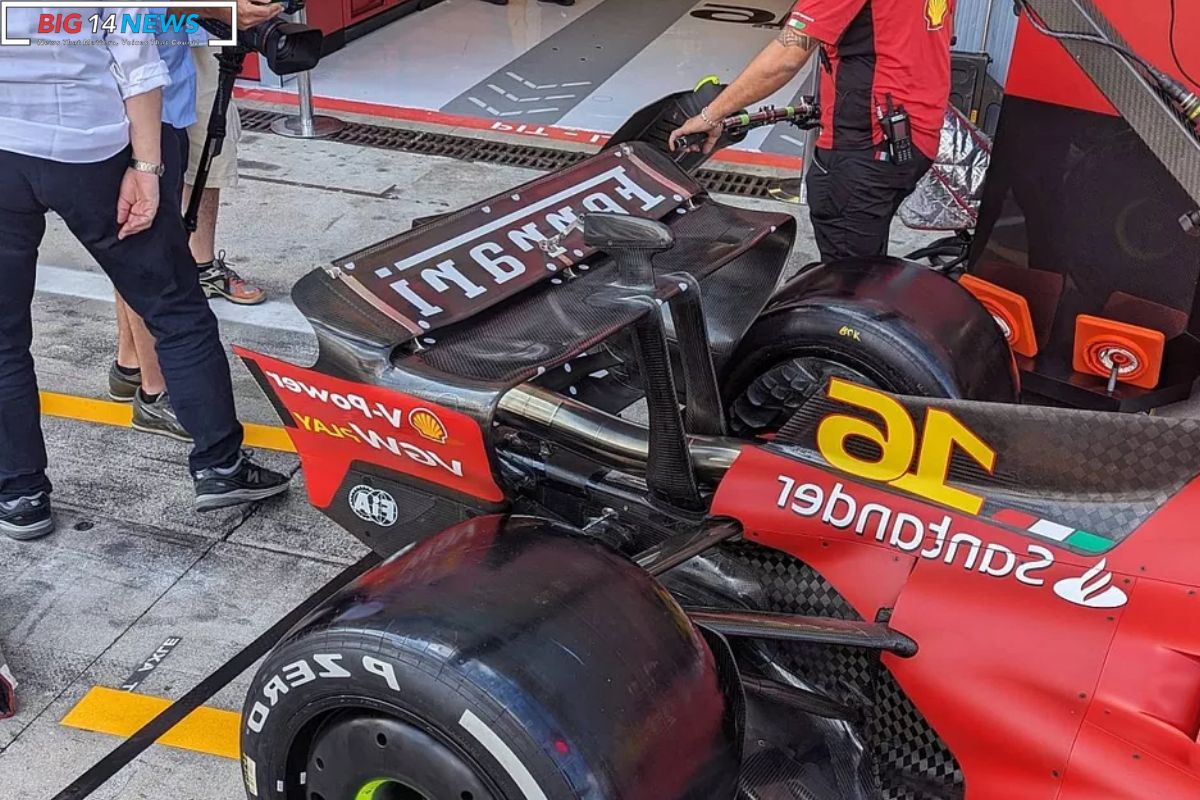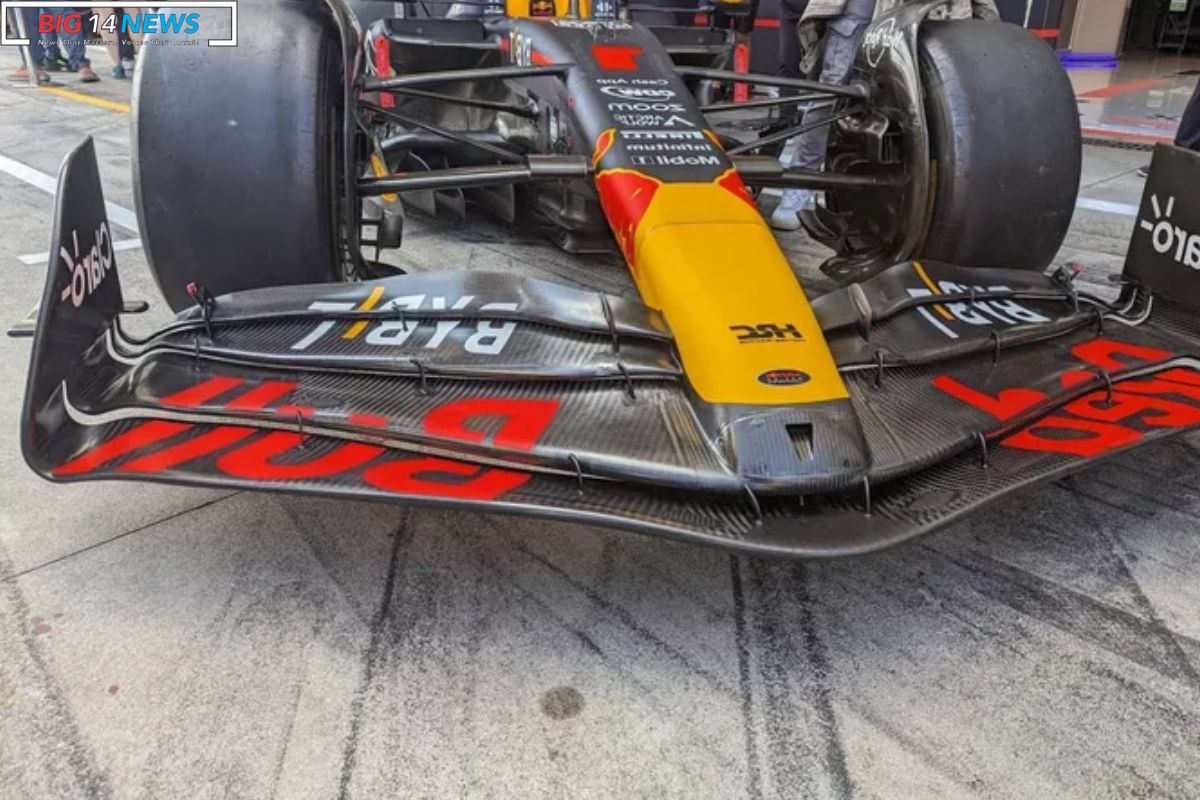Monza F1 Wing Approach: The Monza F1 track is known as the “Temple of Speed,” with teams using various aerodynamic tactics to maximize straight-line speed while managing downforce and drag. Red Bull, Mercedes, and Ferrari have developed their rear-wing ideas, with some teams creating track-specific designs. Strategies vary due to factors like cost caps and balancing speed and downforce.
Red Bull uses two rear wings for faster straight-line speed. Mercedes opts for a low downforce and drag rear wing and beam wing combo. Ferrari unveils new rear wing for track speed boost. Aston Martin and McLaren changed their aerodynamic packages, considering downforce and drag. Alfa Romeo and Alpine have new designs aiming for better aerodynamics.
Red Bull Racing, known for its straight-line speed, has two rear wing choices. One has a trimmed top flap and a removable Gurney, while the other has a more even trailing edge with a V-shaped cutout. The team has a beam wing for aerodynamics.
Mercedes chose a rear wing with low downforce and drag. It’s similar to their past use but lacks Red Bull’s Gurney flap. The team also added infill panels to balance downforce and drag at sites with less downforce.


ALSO READ: Half Life 2 RTX: Modders Elevate Remake with Nvidia Cutting-Edge Technology
Ferrari has a unique rear wing shape for Monza. The wing has a flatter main plane and a large top flap to maintain the DRS effect. Ferrari reduced the top flap of the front wing for stability. Aston Martin reduced the upper flap and added a Gurney flap to decrease downforce. In FP1, McLaren tested two back wing and beam wing designs using flo-viz. Alfa Romeo had an interesting design with a flat mainplane surface and swan neck-like support poles.
Teams have made decisions based on budget and sacrifices. Trimming the upper flap’s rear edge saves money but alters wing performance with DRS. In FP1, Alpine used tufts instead of flo-viz to study their rear and beam wing aerodynamics. This old-school method adds excitement to this weekend’s race. The “Temple of Speed” is a place for F1 teams to test aerodynamic ideas. The Monza track will create an exciting race weekend as teams balance downforce, drag, and speed.
Also Read: China Enhances Infectious Disease Control: with New Risk Assessment Rule
Our Reader’s Queries
Is Monza low or high downforce?
Mercedes has chosen a low downforce, low drag rear wing and beam wing combo for Monza. The upper elements mirror past designs, with a trimmed trailing edge of the upper flap, but without the Gurney seen on the Red Bull.
How do aerodynamics work in Formula 1?
As the car zooms through the air, the downforce will press the car down onto the ground. When it comes to the aerodynamics of the car, there are three forces at play: the downforce is the vertical force, the drag is longitudinal, and the side forces are lateral, with three moments operating around these axes.
How do F1 teams use aerodynamics to gain an advantage over their competitors?
Additionally, aerodynamics plays a significant role in creating grip. Formula 1 teams utilize advanced technologies to minimize air resistance and boost downward force, intensifying the pressure on the tires and improving traction with the track. As a result, this enhances grip, enabling cars to navigate corners at increased velocities.
What is the aerodynamics of the rear wing of a F1 car?
Different tracks require varying rear wing configurations since they have the most impact on drag. The rear wing design is adjusted by teams to match the specific track layout and aerodynamic needs of the car. The shape of the wing disrupts airflow, resulting in drag.

